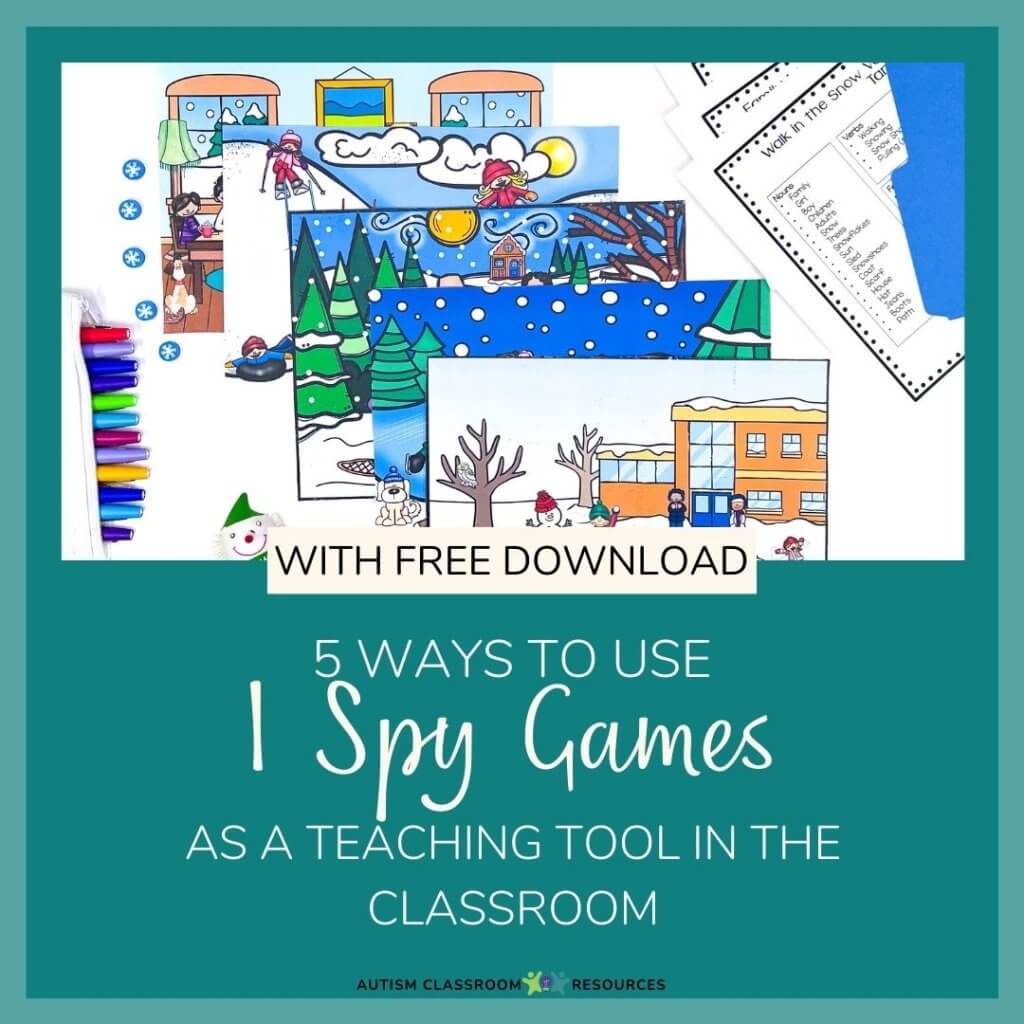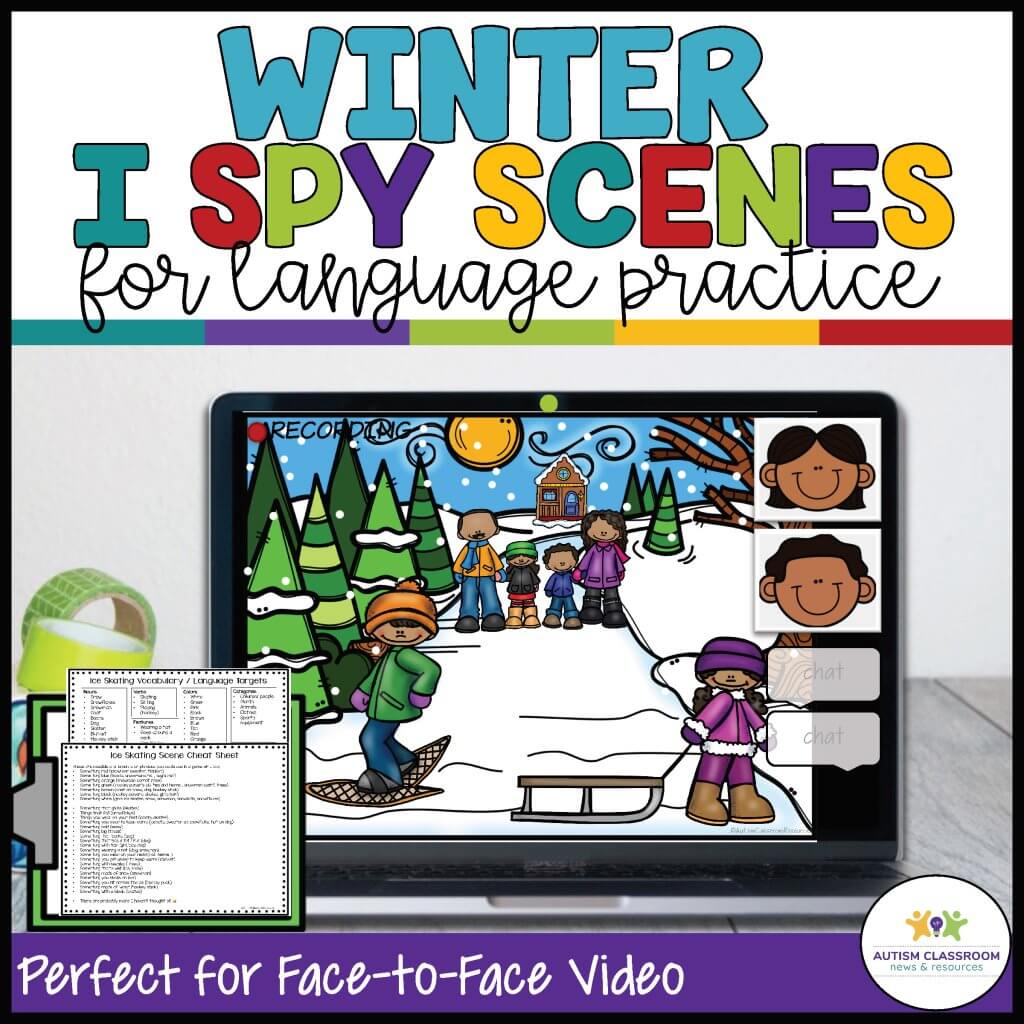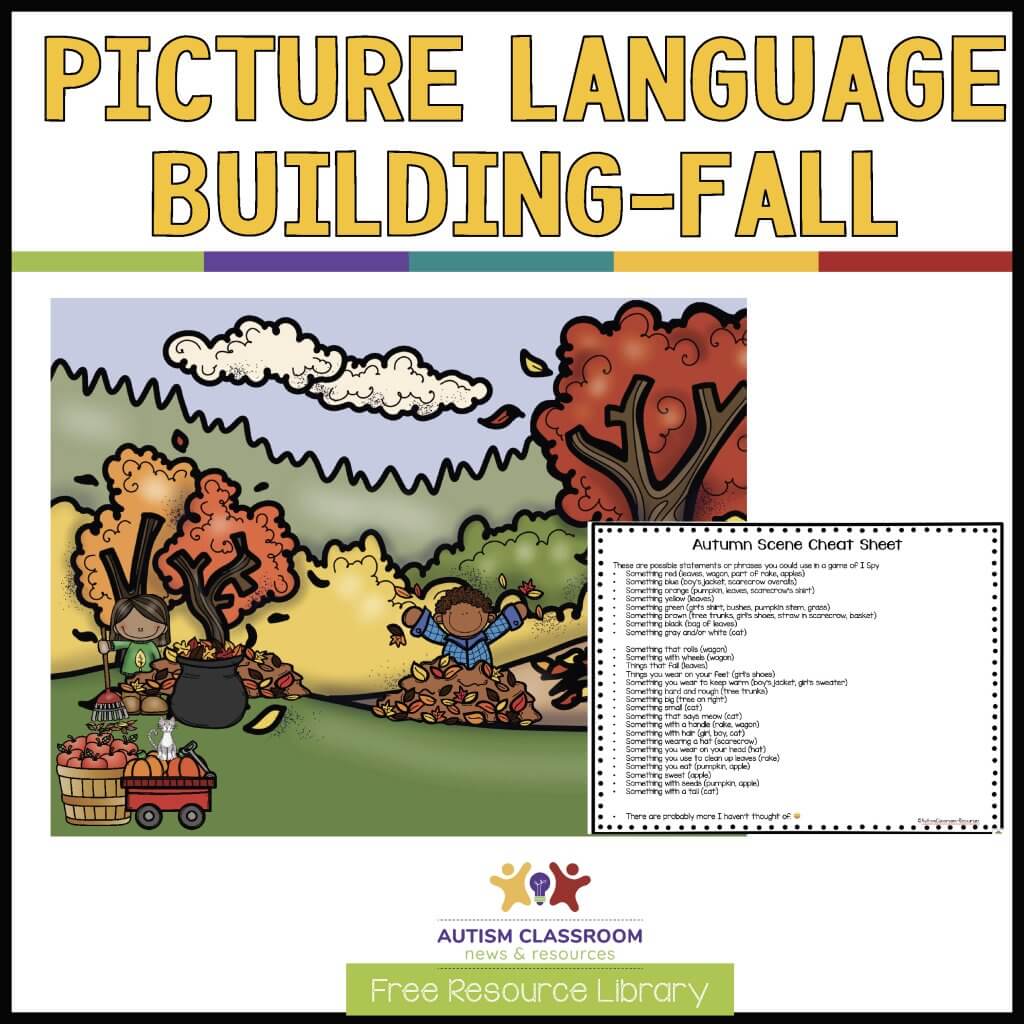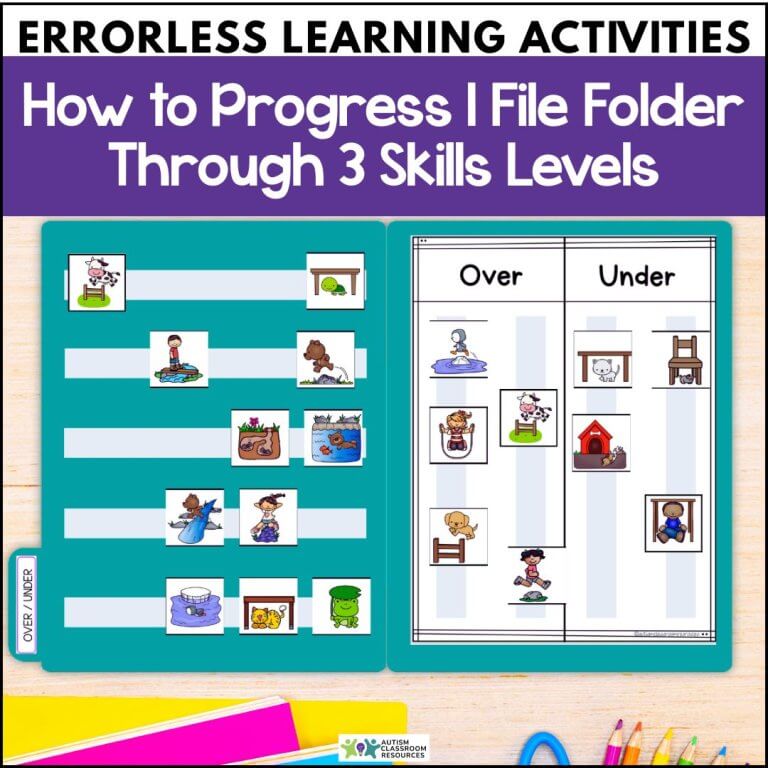“I Spy” printables for playing the game are my secret weapon for killing time and getting kids excited about learning new words and chatting more. I whip them out when we’re stuck waiting for the class before us to finish, or when we’ve got a few surprise minutes before switching activities. I’ve played “I Spy” with all kinds of kids to help them learn all sorts of things, but it’s a real gem when it comes to boosting their vocabulary.
You’ve probably played the classic “I Spy” game before, right? You know, “I spy, with my little eye, something…” and then you drop a hint. It’s a super fun way to teach kids new words and get them talking.
And the best part? You can tweak “I Spy” to fit any lesson or any kid’s needs. Plus with the free I Spy printable and printable kits below, you can use it for all types of classroom learning including whole group or 1-1 instruction!
I Spy Printables
This idea originated during our incredible efforts at keeping students engaged in online distance learning. I had used I Spy games for a way to keep students engaged during downtime in the classroom for years.

But I realized that sometimes we’re so exhausted it’s hard to pull up the ways to get the game started as the instructor. And I also realized that sometimes the “whole world view” of a traditional I Spy game can be a little too large for some of our students who are just learning how to recognize, describe and name parts of their environment. Enter I Spy Printable Scenes.
There are 2 sets of these in my store and I have a free scene for you later in this post. There are seasonal and general scenes and each scene has a cheat sheet that has a list of the vocabulary included and hte questions you could ask. Because I’m all about reducing trying to think in the middle of running a classroom!
Skills You Can Teach with I Spy Printables
Whether you are using the printable scenes or just pulling this out of your pocket to fill in some waiting time outside of the specials classroom, you can use I Spy to focus on a number of different types of skills. It’s great for working on descriptive language skills (i.e., describing what they see with their little eye). But you can also set it up to target receptive language or expressive language skills. It’s great for working on asking and answering questions. You can work on learning vocabulary and describing or finding items by a feature, its function or its category.
You can use I Spy to target turn taking skills for game play and you can even use it to target more early academic skills like identifying letters or finding items that begin with a specific letter.
5 Ways to Play I Spy
So, if you have followed me for any length of time, have listened to videos in the Special Educator Academy, or attended any of my on-site or virtual trainings, then you know I rarely play games with students in the way the game was intended. I guess it’s my version of coloring outside the line.
Well there is one time that I do play the game as intended–and that’s when the skill I’m teaching is actually playing the game. So yes, I remove the chair during musical chairs when I’m teaching students how to play it. So, it’s no surprise that with I Spy, I would use it in different ways to teach different skills. and one of the advantages to using something with the clear structure of I Spy is you don’t have to teach a new game to teach a new skill. The structure stays the same–just the things you are identifying are different.
#1 Traditional I Spy
Ok, I have to start with the straightforward I Spy type of game. It makes a great ice breaker for starting off a group activity. And it’s a great tool to have in your toolbox for whenever there is downtime you need to fill. Because we know that keeping students engaged is a key element in preventing challenging behavior.

In case you aren’t familiar with I Spy, the traditional version involves observing the surroundings or a picture, with each participant taking turns saying, “I spy something [descriptive characteristic].” The other players then attempt to guess the object being referred to. For instance, I might say, “I spy something green,” and you could guess “Frog.” If you guess correctly, it will be your turn next. Occasionally, the phrase “I spy, with my little eye, something green” is also used.
I Spy Printables are a fantastic tool to enhance turn taking skills and encourage students to infer characteristics of items. This version is particularly effective for verbal students who can use these clues to give you answers. However, for nonverbal students or those who are not yet expressing characteristics, this version may not be as suitable. Although they can participate by pointing, taking turns to ask questions might be a bit challenging for them. Utilizing I Spy Printables can be a fun and engaging activity to promote learning in the classroom!
#2 Simple I Spy
In the game of Simple I Spy, both you and your students can take turns either naming or locating objects in the picture. Instead of describing the object, you can simply say, “I spy, with my little eye, a snowman” and the student can then point to that item. Afterwards, it’s the student’s turn to do the same.
This version of the game is particularly suitable for students who are still practicing basic labeling or identifying items through listening. If students need to work on labeling, they can respond to the teacher. However, if they are solely focusing on identifying items by pointing, that method can be used too. The I Spy printables are a great resource to support this activity.
#3 I Spy FFC
I Spy FFC is a variation of the traditional game that focuses on finding and identifying objects based on their specific features, functions, or categories (FFC). By working on FFCs, students learn to go beyond simply labeling items and instead develop the ability to locate objects even when their names are unknown.
It’s like playing I Spy by color, size, shape, category, or how we use it. For example, “I see something we sit in” could be answered with “chair.” When students identify the items, it helps build receptive vocabulary through feature, function, and class (RFFC). On the other hand, if they describe the items for you to find, it supports expressive vocabulary (EFFC). Check out the I Spy printables for more engaging learning opportunities.
#4 I Spy Verbs
Guess what? You can also enjoy a game of I Spy by locating and describing objects based on someone’s actions. For instance, you could say, “I spy someone who is throwing,” and the other players might identify the boy tossing snowballs.
Verbs add another layer to our students’ language development, and I Spy provides a enjoyable opportunity for them to practice recognizing people’s actions. You could even have them act out the verbs and incorporate some physical activity. Verbs are identified in the I Spy Printables below.
#5 I Spy Letters
It may be a bit of a stretch to connect I Spy to language facilitation, but it’s still a valuable skill to practice. In this variation, you can engage students by having them identify items based on their first or last letter.
For instance, you could say, “I spy something that starts with T,” and the answer would be Tree. Alternatively, you could say, “I spy something that ends with G,” and the answer would be dog.
Mix and Match Versions to Build Vocabulary Individually
I Spy Printables offer a versatile and engaging activity for educators. Not only do they serve as a great filler option, but they also allow for easy customization. You can mix and match the way the game is played to provide differentiation.

For example, you can use I Spy Letters for clues while students use I Spy Colors for cues. Alternatively, you can answer cues expressively while students point to the pictures to respond. The game can be modified further by allowing you to give cues and have students find the items on the scene, or by pointing to the items and having students describe what they spy. In addition to building vocabulary and facilitating language skills, I Spy Printables also promote turn-taking, listening skills, following directions, attention to detail, and other important abilities.









